Growing a pumpkin
Growing a Jarrahdale pumpkin in the back garden of a townhouse.
In 2014 and 2015, we grew our first pumpkin and named him Gourdon.
Gourdon was a Jarrahdale Pumpkin (Cucurbita pepo) grown from seed. We chose this species for its suitability with Western Australian weather.
Seeds and sprouts
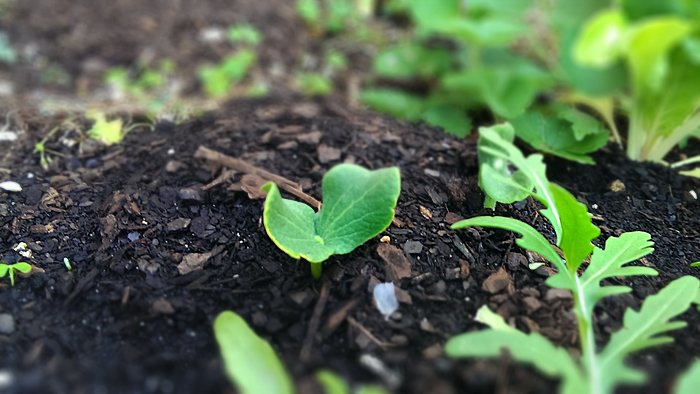
A few seeds went into the ground in early October 2014.
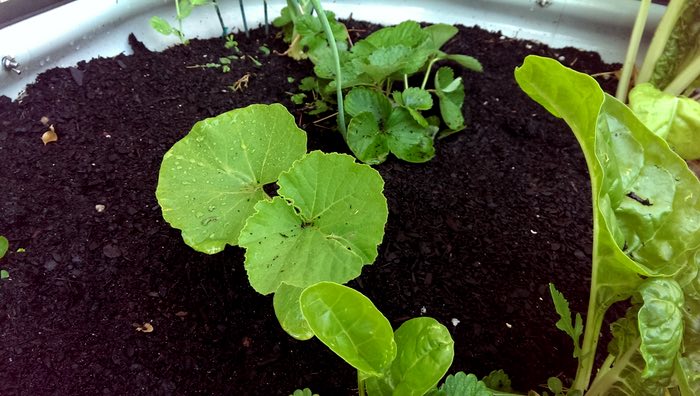
In late October, we culled the seedlings that looked less viable and harvested other plants growing in that garden bed (strawberries, silverbeet and rocket) so the one remaining pumpkin plant could take over.
The leafy life
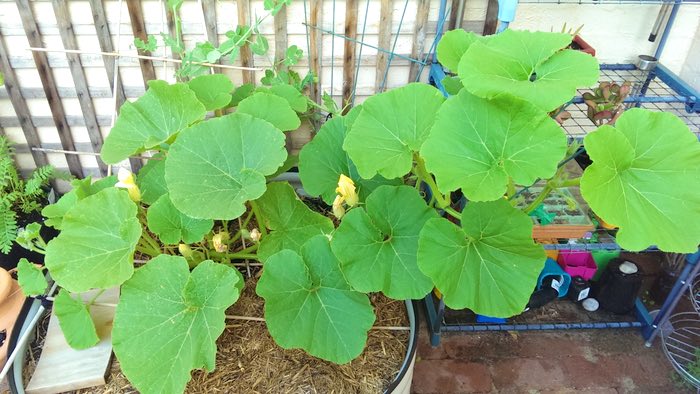
By early December, the greenery was prolific and bright yellow male flowers had begun to grow.
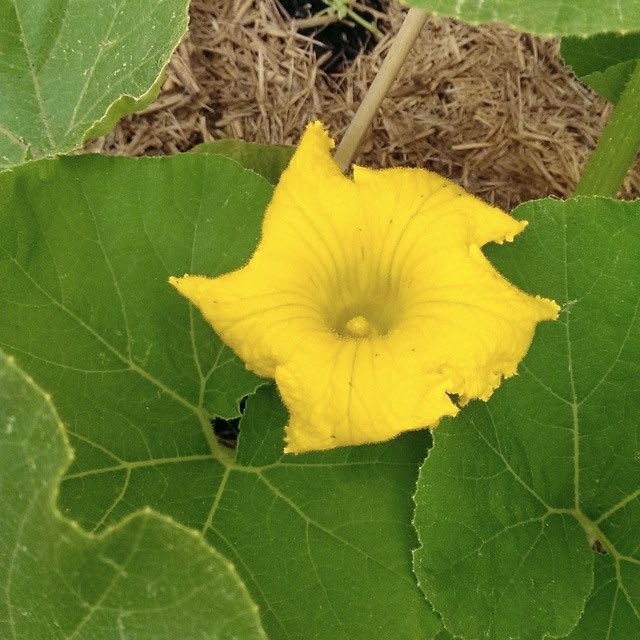
How did we know they were male? Um, I'll tell you when you're older.
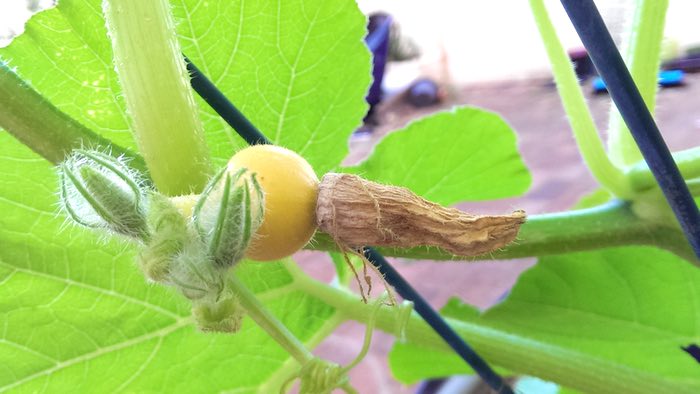
We noticed what we thought might have been female flowers emerging and spontaneously withering, but they could have just been less viable males.
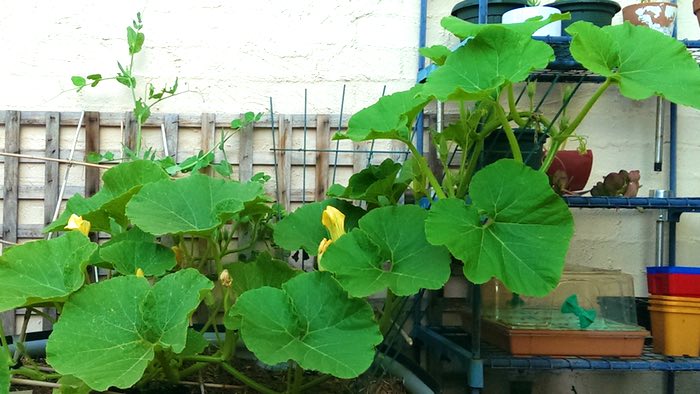
A pumpkin vine is very easy to train up a trellis. It's heavy enough to settle when you rest it somewhere, so unlike with snow peas you don't have to wait for grabby tendrils to grow. And unlike hops, it's strong enough not to snap or crease if you take a slightly wrong bend. And unlike creeping fig it's soft enough to change direction (within reason) when you need to.
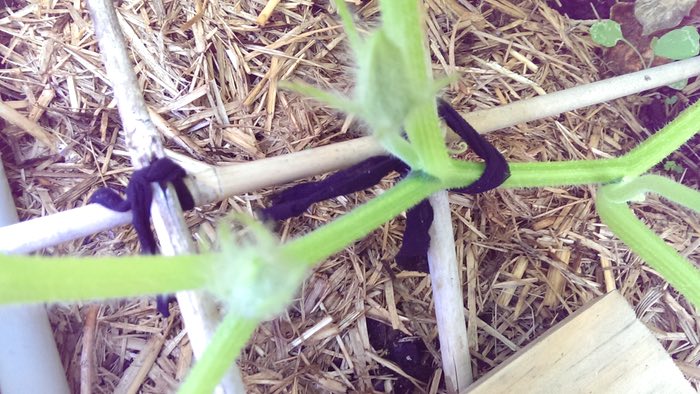
To secure the vine, we used cut-up strips of pantyhose to minimise surface abrasion.
A pumpkin pregnancy!
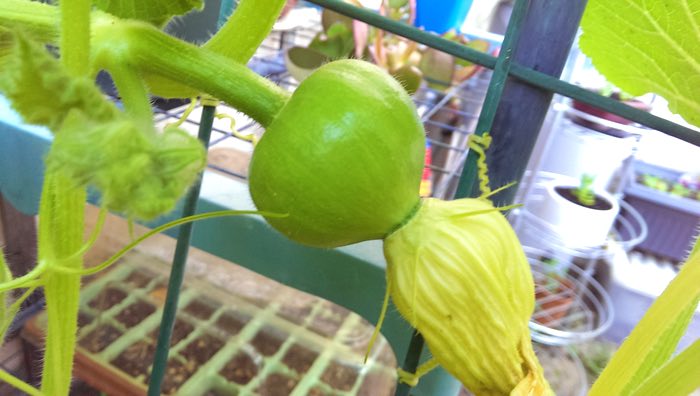
In mid December, we spotted a female flower on the verge of blooming, so we got up early the next day to hand-pollinate her. She smelled amazing, by the way. As soon as we stepped outdoors, we could smell a sweet honey-pumpkin fragrance in the air. None of the articles and books said anything about this. What a delightful surprise!
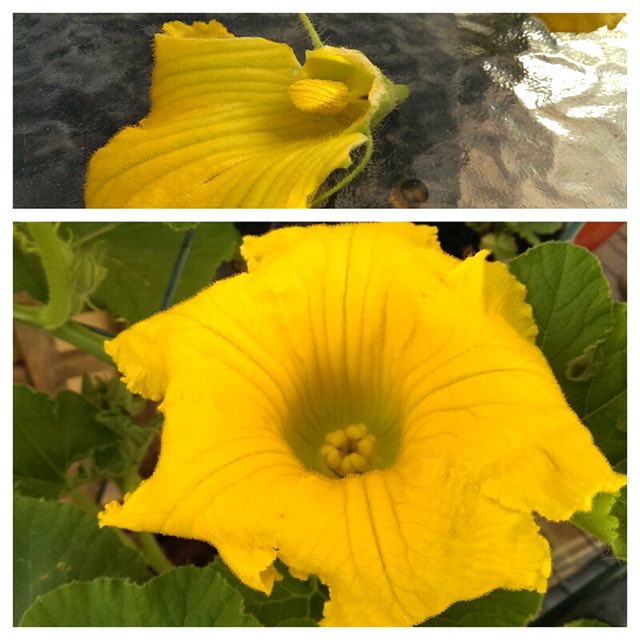
We disrobed the healthiest looking male flower and gave the anther a good rub on the female's stigma. In, around, and in again. And left the anther in for good measure.
That evening, I gave her a prod, thinking I should remove the anther, but she was shut up tight. The following morning, her ovary had grown from marble size to a ping pong ball. A few days later, at 5 days old, it was as big as a cricket ball.
A pregnant pumpkin requires lots of hydration through the warm summer days, lots of nutrients in the soil (for us: Seasol, potash and vermicompost), and control of powdery mildew infestation to ensure minimal stress on the plant.
A growing baby
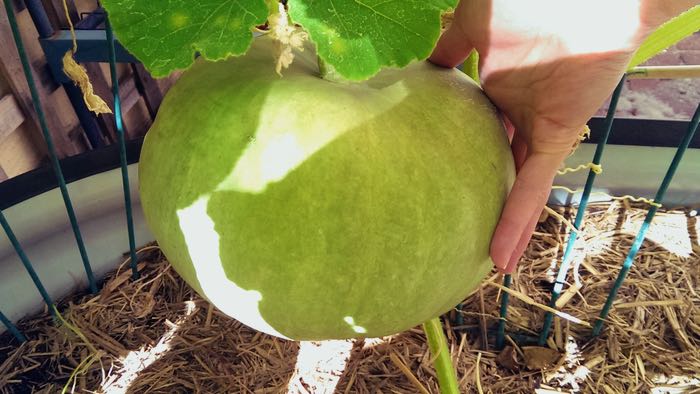
9 Jan 2015: Our little Cucurbita pepo at 23 days, which is approaching harvest time, according to Gardenate.
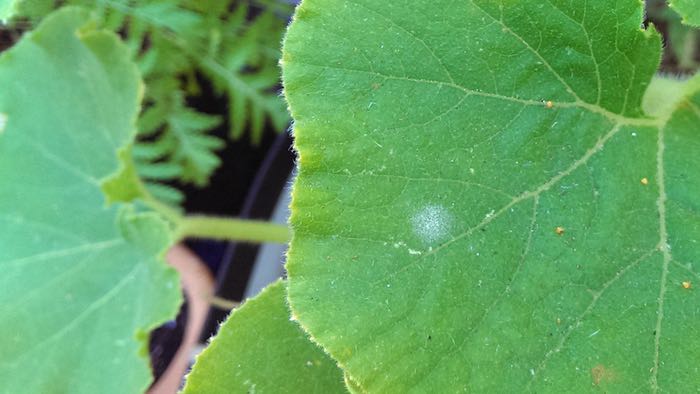
We had minor bouts of powdery mildew. It was sad to see white fuzzy spots suddenly appearing on leaves. But you can understand why this annoying fungus likes to make a home on them - rough and furry fibres, lots of surface area to nest in.
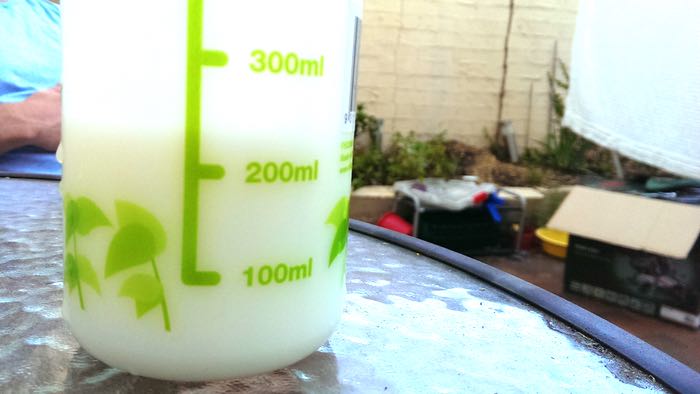
Our remedy of choice was milk spray, which sounded like a disgusting myth, but apparently is a thing (pg. 31, 37), quite likely because:
- milk residue leaves a physical barrier on the surface of the leaf,
- milk alters the pH of the leaf surface, changing the conditions typically ideal for fungal growth, and
- a protein in the milk has a destructive effect on the mildew's reproductive parts.
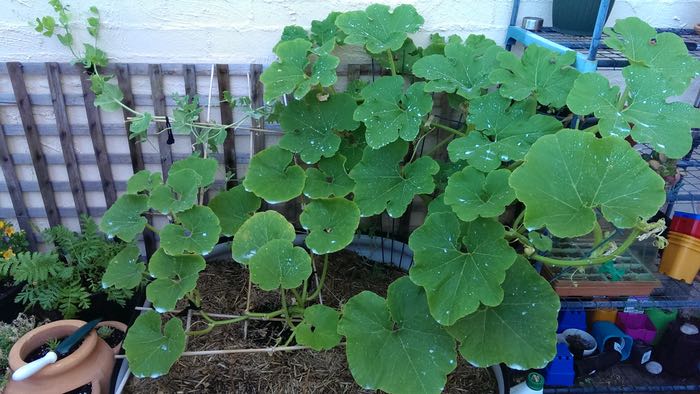
Still, it was disgusting and it stank on warm days, but only for a while. By the next day, the white spots were still visible, but faded.
FYI: Pumpkins can get sunburn
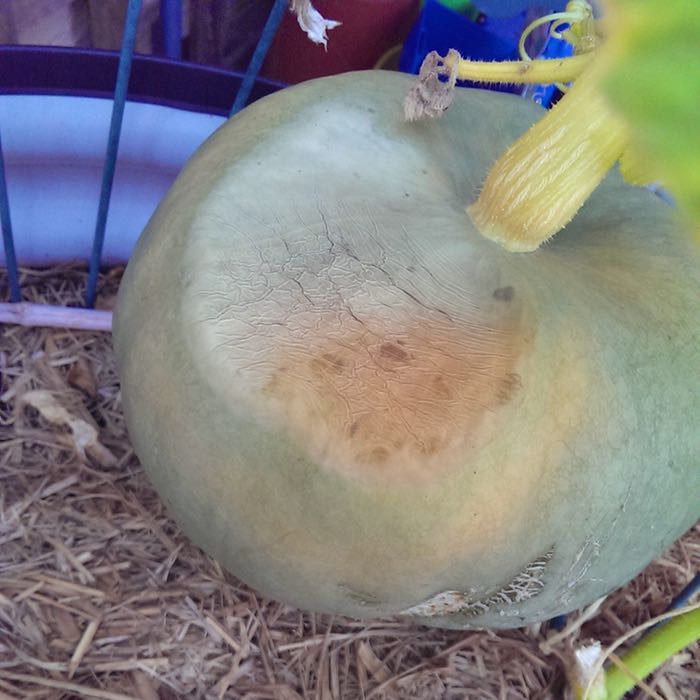
Late Jan/early Feb 2015 brought us a heatwave with temps in the high 30s for days. I didn't bother shading the garden bed, thinking Gourdon was a summer plant so of course it won't burn. Then when early signs showed, ignored them until realising they were getting worse over time.
Usually you'll read about pumpkin leaves getting sunburnt, but the fruit can burn too, especially if you've been removing leaves in the fight against mildew.
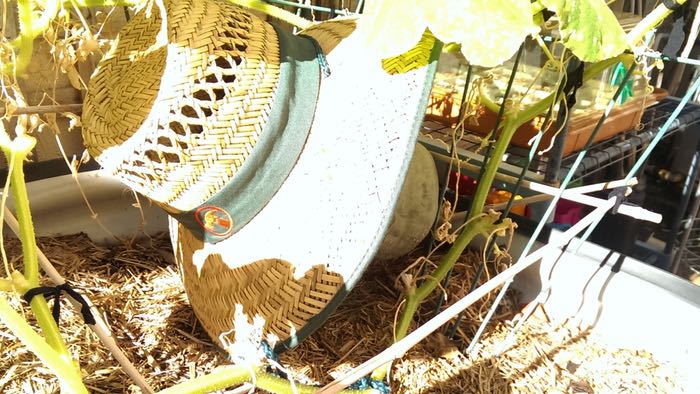
Shading Gourdon helped. I still have that hat, warped and weathered by a spate of rain that hit on the one weekend we weren't there to tend the garden.
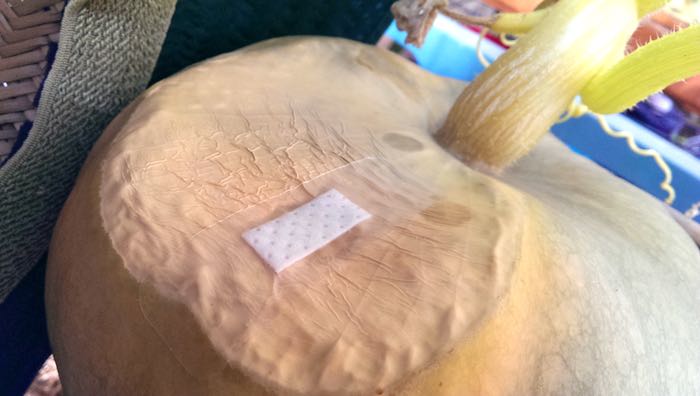
As the warm weather abated, we noticed the burn skin had blistered, leaving a hole about the size of a thumbprint in the top of the pumpkin. Nothing looked sick or rotted, but a couple of ants were scouting the crater, so we covered it with a band-aid.
The whole ordeal was S T R E S S F U L and I just wanted the vines to cark it so we could be done with this blasted project.
Little baby Gourdon
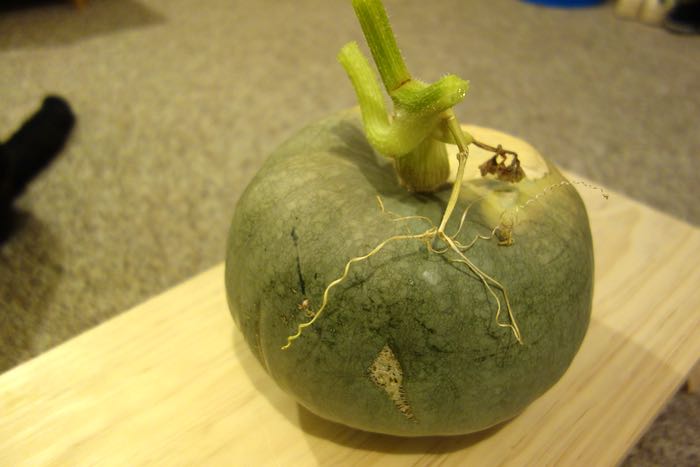
In mid-Feb 2015 after 58 days of fruiting (126 days plant age), we welcomed a new addition to the family.
In the end, we didn't wait until the plant died around him. His blister started looking strange and ants were creeping under the band-aid, so we thought it best to bring him indoors.
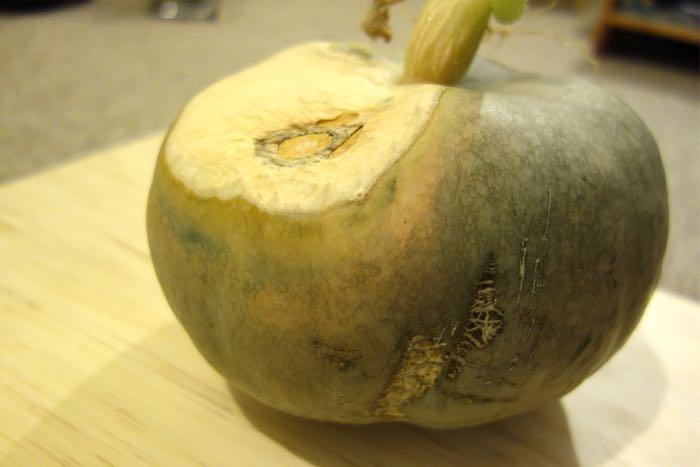
Here he is with sunburn and wound, which had hardened up a bit. It was only when we inspected him later that we realised we could have let him grow for longer.
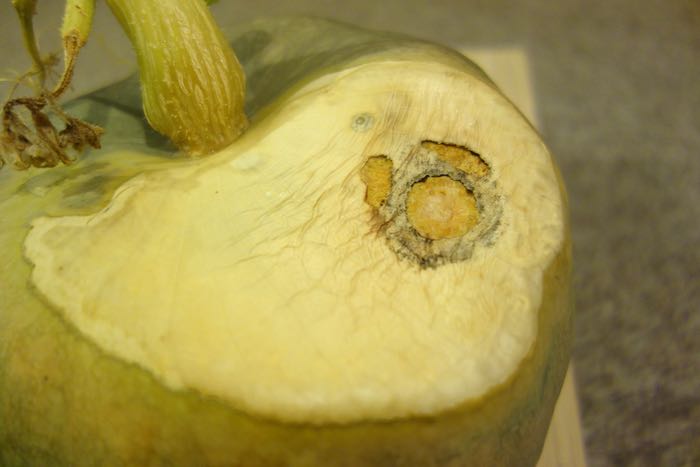
It was interesting to see how plants recover from trauma. The hole was rough and hard like a callous.
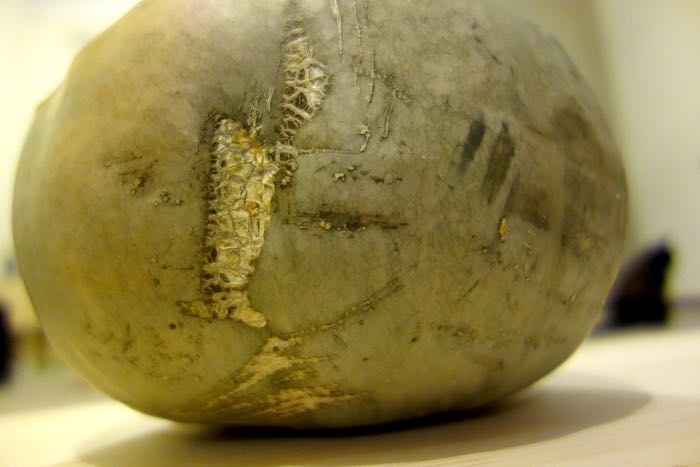
There was other trauma too. At one point, Gourdon started growing into his trellis and got stuck. This is a scabbed over blister from when we pulled him out.
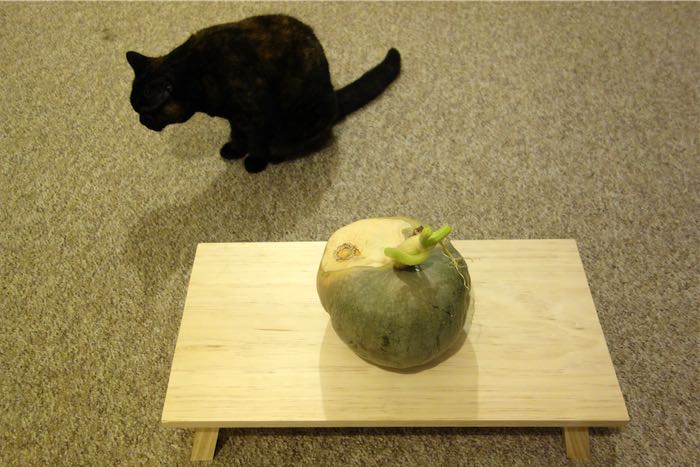
Gourdon ended up smaller than our cat, but Jarrahdale pumpkins are capable of growing to a more respectable size.
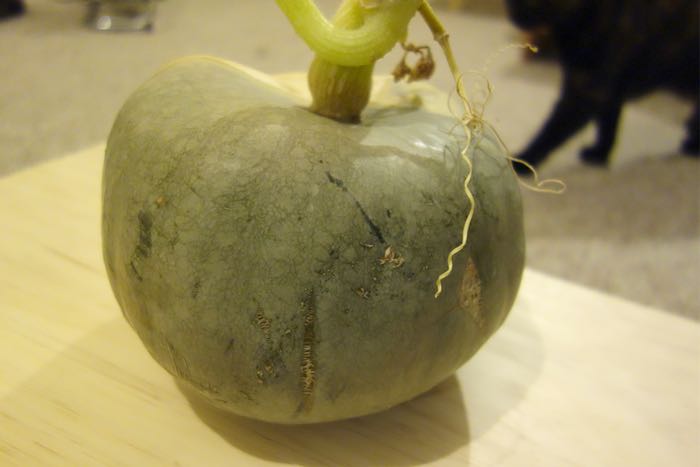
Lessons we learned
First, to achieve your goals, you must respond to problems that come up — be it sunburn, flesh wounds, or general life stuff. You can't pretend they aren't happening just because you read something on the internet. And you can't wait around hoping things will fix themselves.
Of course, you can't control everything, but what you can control can help tip the odds in your favour. And it's nice to have odds in your favour.
Second, everything comes and goes with the season, including the motivation to tend plants for 20 minutes a day. It's one thing to be excited and enthusiastic, but another thing to be disciplined and commited.
Success requires all the things and for the times where this wanes, you need loving, supportive people around you to help keep you going.
Finally, however much you obsess over your beloved vegetable, the fact that you can harvest early, cut off the gross bits, and eat the rest shows this is not at all like having a child. Having children would be infinity times more difficult than growing a pumpkin for the first time, therefore I don't want it.
Oh yes, what became of Gourdon...

Part of Gourdon became a pumpkin soup. It was bland. It turns out Jarrahdale pumpkins are nutty, almost squash- and zucchini-like in flavour. The pumpkin-ness is mild, so they are better suited to curries.
If making pumpkin soup, use Butternut or a fecking Kent (also known as Jap).
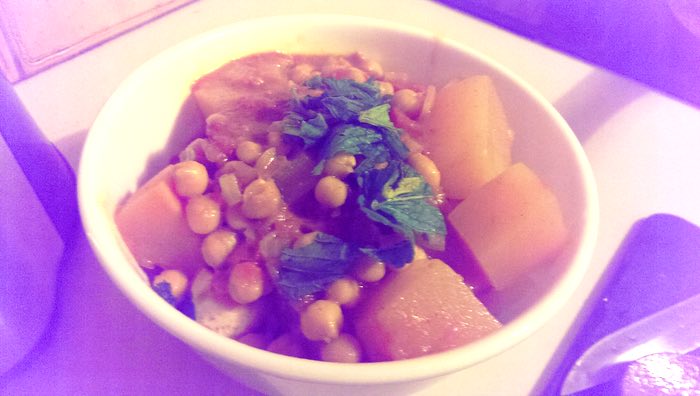
Gourdon also became a curry, and his mild flavour worked very well with spices and chickpeas. I am so proud of my boy.